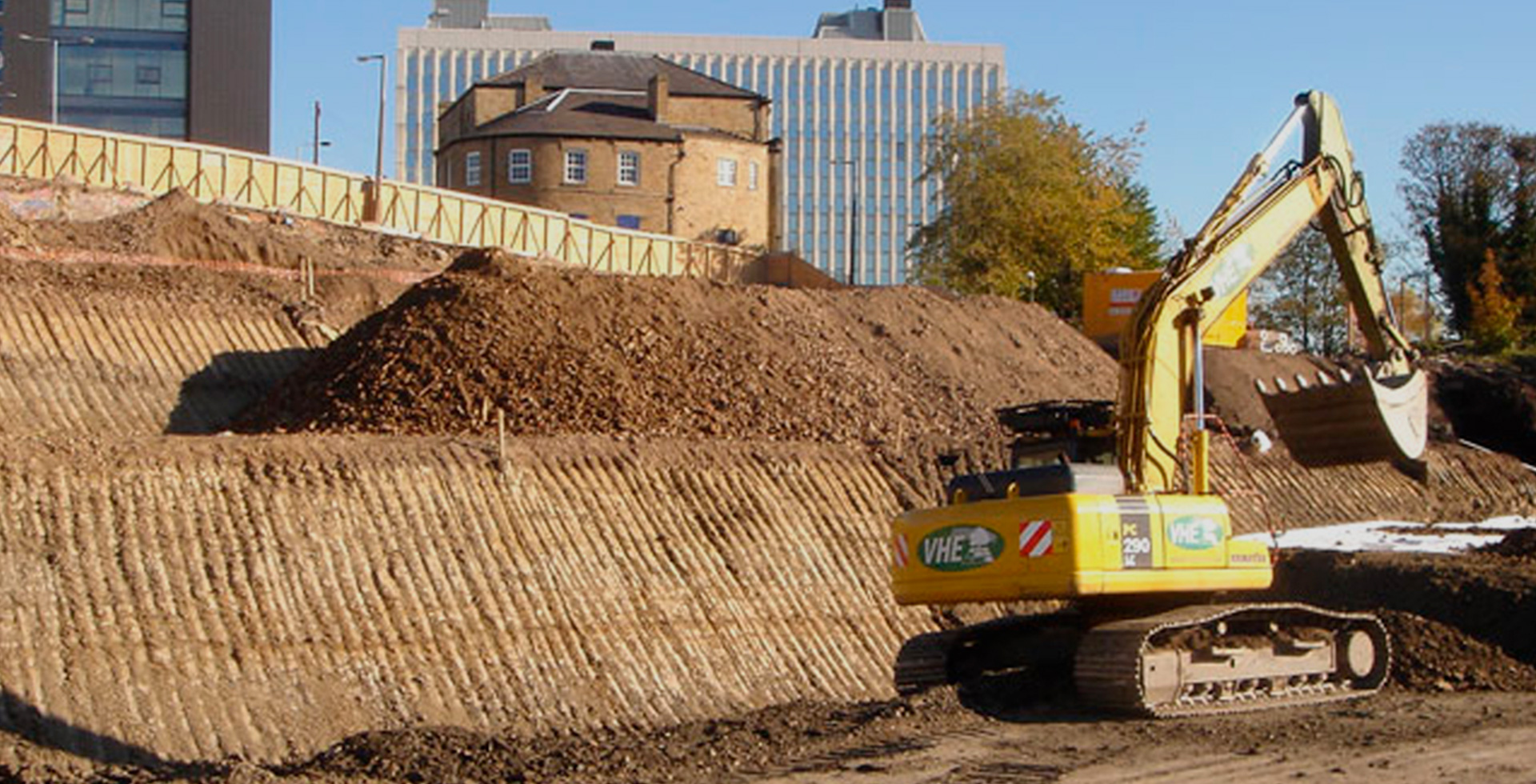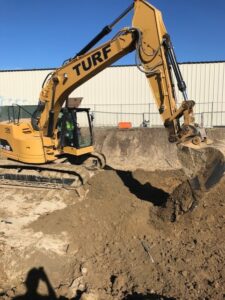
Slope failure risks in construction pose a substantial challenge Constructing on slopes necessitates meticulous planning and precise execution to guarantee the durability and security of structures. In this comprehensive blog, G3SoilWorks takes the lead in unraveling the critical significance of adhering to proper construction practices for effectively reducing the hazards associated with slope failures.
The need to comprehend and address these challenges cannot be overstated. Our blog will provide a thorough exploration of the intricacies of mitigating slope failure risks through the implementation of essential strategies. Central to this endeavor will be an in-depth examination of slope stabilization methods, among other key practices, that are fundamental for constructing and maintaining secure and long-lasting structures on slopes.
Slope failures represent a daunting challenge in construction, occurring when the stability of a slope is compromised, potentially resulting in soil erosion, landslides, or structural damage. Factors such as heavy rainfall, seismic activity, and suboptimal construction techniques can exacerbate the vulnerability of slopes to failure. Recognizing the significance of enhancing slope stability is paramount for the success and safety of construction projects, especially in demanding terrains.
In the dynamic realm of the construction industry, unwavering adherence to best practices is an absolute imperative. Each phase of the construction process must rigorously adhere to industry standards to substantially reduce the risk of slope failure. These best practices are not mere guidelines; they form the bedrock of construction excellence, ensuring the safety of lives and property.
Embracing proper construction practices is akin to wielding a shield against the potential havoc that slope instability can wreak. Beyond safeguarding lives and property, these practices also play a pivotal role in mitigating the profound financial and environmental consequences that can stem from slope failures.
Slope failures, with their potential for soil erosion, landslides, and structural damage, can result in substantial economic burdens and environmental degradation. Therefore, the integration of best practices throughout the construction process serves as a powerful deterrent against these threats, fostering safer, more sustainable, and cost-effective construction endeavors.

Prior to embarking on any construction venture, conducting a comprehensive site assessment stands as an indispensable preliminary measure. This entails a thorough and meticulous examination of various critical factors, including soil composition, geological conditions, and the intricate patterns of water drainage.
Site assessments represent the cornerstone of effective slope management and serve as the foundational step in the intricate process of enhancing slope stability. By scrutinizing soil attributes, geological formations, and drainage intricacies, construction professionals gain invaluable insights into the site’s vulnerabilities. This knowledge empowers them to formulate targeted strategies and implement precise measures designed to mitigate potential slope failure risks.
In Costa Mesa, CA, where the landscape can be particularly challenging, site assessments assume even greater importance. They enable construction experts to tailor their approaches to the specific geological nuances of the region, fostering a safer and more resilient construction process.
Effective drainage systems play a pivotal role in averting water accumulation on slopes. The installation of drainage channels, weirs, or retention ponds can redirect surplus water away from the slope, thereby reducing the risk of erosion and instability. The utilization of appropriate drainage solutions constitutes a pivotal element of comprehensive slope stabilization methods. Properly planned and executed slope management techniques, including slope stabilization methods, are indispensable for effectively addressing the specific risks associated with undulating regions.
Incorporating proven slope stabilization techniques, such as retaining walls, geogrids, and reinforced slopes, can substantially enhance the structural integrity of the slope, particularly in cases involving steep or unstable terrains. Mastery of these techniques is instrumental in learning how to improve slope stability, making them vital components of construction projects in Costa Mesa, CA.
The process of choosing the right construction materials holds immense significance when it comes to ensuring slope stability. Opting for materials that exhibit low erosion rates, possess high compressive strength, and demonstrate durability in the face of environmental elements is paramount in the endeavor to minimize risks associated with slope instability. The meticulous selection of construction materials represents a critical facet of effective slope stabilization strategies.
Low erosion rates in construction materials are essential to mitigate the risk of soil erosion on slopes, which can compromise the stability of the entire structure. Materials with high compressive strength are better equipped to withstand the pressures and forces exerted on them, making them less prone to deformation or failure. Durability against environmental elements, including rain, wind, and temperature fluctuations, ensures that the chosen materials can maintain their integrity over time, further contributing to slope stability. The thoughtful consideration of these material properties is fundamental in the pursuit of effective slope stabilization.
Even upon the completion of construction, the commitment to ongoing monitoring and maintenance remains paramount in preserving the stability of slopes. Regular inspections, combined with the implementation of erosion control measures, serve as essential safeguards against the gradual deterioration of slopes over time.
Regular inspections provide an opportunity to detect early warning signs of slope instability, allowing for timely intervention and preventive measures. Implementing erosion control measures, such as vegetation or retaining structures, helps protect slopes from the erosive forces of wind and water. Prompt repairs address any damage or weakening of the slope’s integrity, preventing minor issues from escalating into major problems.
The development and execution of a comprehensive maintenance plan stand as indispensable components of long-term slope stabilization efforts. Such a plan ensures that slopes are consistently monitored, maintained, and fortified, prolonging their lifespan and enhancing their resilience against potential instability. This commitment to vigilant care is instrumental in safeguarding not only the integrity of the slope but also the safety of the surrounding environment and infrastructure.

G3SoilWorks has some of the most experienced geologic engineers in Southern California. Our principals are veterans, with over 100 years in geotechnical, environmental, and engineering geologic consulting experience throughout the southwest and western United States.
To concluce, minimizing slope failure risks in construction is imperative for ensuring safety, sustainability, and cost-effectiveness. By conducting thorough site assessments, employing proper drainage systems, utilizing suitable stabilization techniques, and monitoring slopes diligently, construction professionals can mitigate risks effectively.
In Costa Mesa and beyond, embracing these construction practices will not only protect lives and properties but also contribute to the long-term well-being of our environment. For expert slope stabilization solutions, trust G3SoilWorks to enhance your construction projects and improve slope stability. Call us at +1 714-668-5600 for more information.
FAQ 1: What Are the Common Causes of Slope Failures in Construction?
A. Slope failures in construction can occur due to various factors, including heavy rainfall, seismic activity, and improper construction methods. Understanding these causes is essential for effective risk mitigation. Our blog delves into the key reasons behind slope failures and how proper construction practices can address them.
FAQ 2: How Can I Improve Slope Stability in Challenging Terrains Like Costa Mesa, CA?
A. Costa Mesa, CA, is known for its diverse topography, making slope stability a crucial concern for construction projects. Our blog outlines strategies and techniques, including slope stabilization methods and suitable construction materials, to help you improve slope stability in challenging terrains like Costa Mesa.
FAQ 3: Why Is Ongoing Monitoring and Maintenance Important for Slope Stability?
A. Even after construction, the commitment to ongoing monitoring and maintenance of slopes is vital. Discover why regular inspections, erosion control measures, and comprehensive maintenance plans are essential for preventing slope deterioration over time and ensuring long-term stability.
Follow, engage, learn. Stop by our blog to see what’s happening at G3SoilWorks.
G3Soilworks – a full service geotechnical/ engineering geologic consulting firm serving clients since 2009 and delivering expert solutions with our highly experienced team and specialized consultants.
G3SoilWorks
350 Fischer Avenue Costa Mesa, CA 92626
Tel. 714.668.5600
E. info@g3soilworks.com